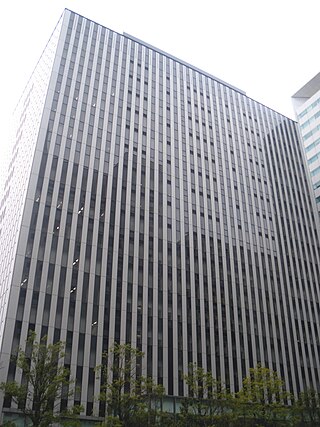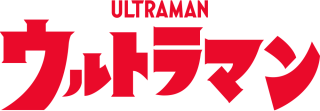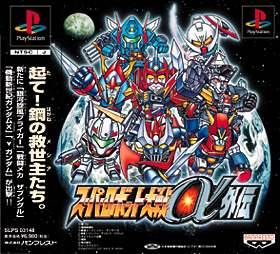
Artdink Corporation (株式会社アートディンク) is a Japanese developer of video games, based in Tsukishima, Tokyo.
Super Robot Wars, known in Japan as Super Robot Taisen, is a series of Japanese tactical role-playing video games produced by Bandai Namco Entertainment, formerly Banpresto. Starting out as a spinoff of the Compati Hero series, the main feature of the franchise is having a story that crosses over several popular mecha anime, manga and video games, allowing characters and mecha from different titles to team up or battle one another. The first game in the franchise was released for the Game Boy on April 20, 1991. Later spawning numerous games that were released on various consoles and handhelds. Due to the nature of crossover games and licensing involved, only a few games have been released outside Japan, and in English. The franchise celebrated its 25th anniversary in 2016, and its 30th anniversary in 2021.

Banpresto Co., Ltd. was a Japanese video game developer and publisher headquartered in Shinagawa, Tokyo. It had a branch in Hong Kong named Banpresto H.K., which was headquartered in the New Territories. Banpresto was a partly-owned subsidiary of toymaker Bandai from 1989 to 2006, and a wholly-owned subsidiary of Bandai Namco Holdings from 2006 to 2008. In addition to video games, Banpresto produced toys, keyrings, apparel, and plastic models.
SD Gundam G Generation is a series of strategy-RPG video games that focus on the Gundam anime franchise.

Ultraman, also known as the Ultra Series, is a Japanese science fiction media franchise owned by Tsuburaya Productions, which began with the television series Ultra Q in 1966 and became an international pop-culture phenomenon. The franchise has expanded into many television shows, films, comic books, and other media publications, becoming one of the most prominent productions in the Japanese tokusatsu and kaiju genres and pioneering the Kyodai Hero subgenre. The Ultraman series is centered on a fictional alien race of superheroes who often combat kaiju or other aliens.
Neverland Company Inc. was a Japanese video game developer founded on May 7, 1993. It has developed games for Super NES, Dreamcast, GameCube, PlayStation 2, Game Boy Color, Nintendo DS, Nintendo 3DS, PlayStation Portable, PlayStation 3 and the Wii. The most notable games this company developed were part of the Lufia and Rune Factory series of video games. By November 2013, the company ceased operations and filed for bankruptcy. The following year, many former members of the studio were hired by Marvelous, who had published many of their previous games.

Super Robot Wars MX is a video game for the PlayStation 2. It is part of the Super Robot Wars series by Banpresto, and it was released on May 27, 2004. It was later ported to the PlayStation Portable on December 19, 2005, with minor gameplay tweaks, titled Super Robot Wars MX Portable.

Tose Co., Ltd. is a Japanese video game development company based in Kyoto. It is mostly known for developing Nintendo's Game & Watch Gallery series, various Dragon Ball games, as well as other Nintendo products. Tose has developed or co-developed over 1,000 games since the company's inception in 1979, but is virtually never credited in the games themselves. Tose maintains a policy of having no creative input into the work they do, going so far as to refuse to put their names in the credits for most of the games they work on. As such, Tose has gained a reputation for being a "ghost developer".

Super Robot Wars Alpha Gaiden, or simply, Alpha Gaiden, is a video game for the PlayStation, first released in Japan in 2001. It is the first side-story in the Super Robot Wars Alpha series, continuing from Super Robot Wars Alpha. The characters of After War Gundam X, Turn A Gundam, and Combat Mecha Xabungle make debut appearances in the game.

Super Robot Wars A is a video game for the Nintendo Game Boy Advance, part of Banpresto's Super Robot Wars franchise and the first to appear on the Game Boy Advance handheld; the letter "A" in the title stands for "Advance". It was ported onto mobile phones as part of the Super Robot Wars i collection in 2006. An enhanced remake of Super Robot Wars A was released for the PlayStation Portable on June 19, 2008 as Super Robot Wars A Portable.
Climax Entertainment was a Japanese video game development company. It was a small company, with just 20 staff in 1996. Climax got its start during the 16-bit era, primarily developing games for the Sega Genesis console. During the 32-bit era, some members of the team left to create Matrix Software. Following the development of Dark Savior (1996), a group of staff members from the company's CGI division formed an independent company Climax Graphics, initially described as a "brother company".

Battle Soccer: Field no Hasha is a soccer video game, developed by Pandora Box and published by Banpresto, which was released exclusively in Japan in 1992.

2nd Super Robot Wars (第2次スーパーロボット大戦) was the first game to be produced in the "Classic" canon timeline, the second game in the overall series, and the first game produced for the Famicom video game system on December 12, 1991.

3rd Super Robot Wars (第3次スーパーロボット大戦) was the third game in a series, the second in the "classic" canon, and the first on the Super Famicom, published on July 23, 1993. Along with 2nd and EX, 3rd Super Robot Wars was released on the Sony PlayStation on June 10, 1999, as part of Super Robot Wars Complete Box and June 22, 1999, as a stand-alone port.

4th Super Robot Wars is a tactical RPG for the Super Famicom developed by both Banpresto and Winky Soft and published by Banpresto. It is the 5th entry in the Super Robot Wars series and the last entry in the Classic Timeline. It was first released on March 17, 1995, and received mostly positive reception, with reviewers highly praising the improvements from the last game while criticizing the game's increased difficulty. The game was ported to the Sony PlayStation and released on January 26, 1996, under the name 4th Super Robot Wars Scramble.

Super Robot Wars UX is a tactical role-playing game for the Nintendo 3DS developed by Banpresto and published by Namco Bandai Games. It is the first Super Robot Wars (SRW) game for the 3DS and was released in Japan on March 14, 2013. The theme of this game is "Possibilities".

SD the Great Battle is a top-down platforming shoot 'em up video game released for the Super Famicom on December 29, 1990. A crossover of the Ultra Series, Kamen Rider, and Gundam franchises, characters from these franchises are playable. The game is presented in a super deformed style. It is also part of the Compati Hero series. A North American release by Bandai was slated for June 1992, however it was never released.













